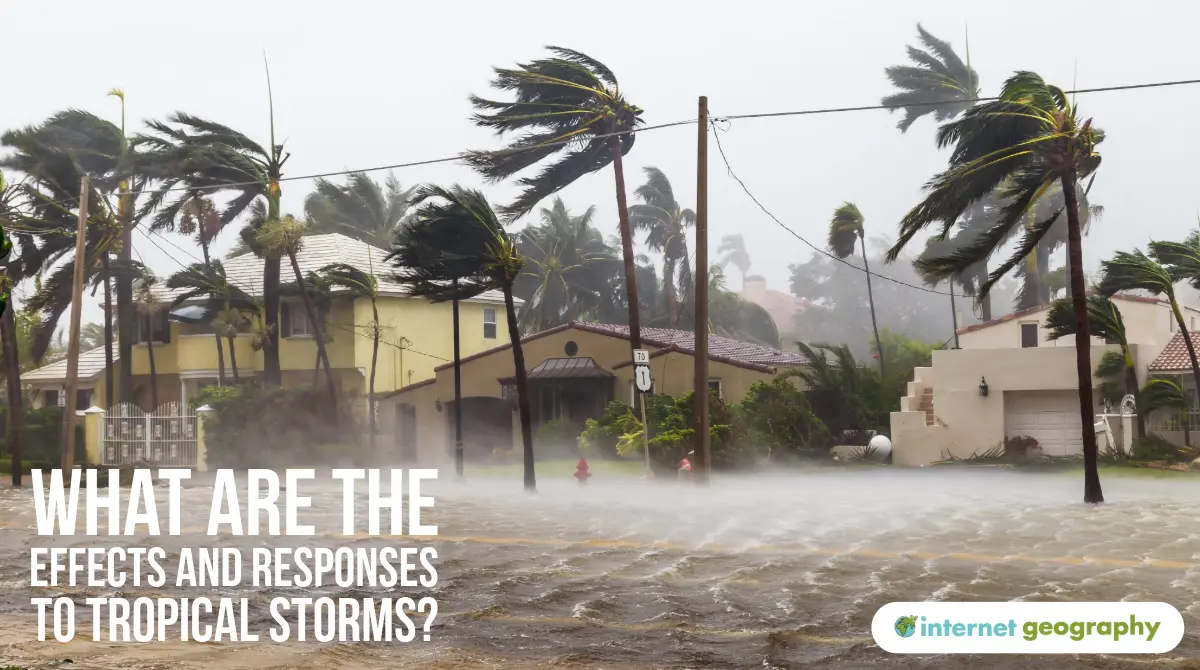What are the primary and secondary effects and immediate and long-term responses to tropical storms?
Tropical storms can cause severe damage to both people and the environment. Their effects can be primary (direct impacts during the storm) or secondary (indirect impacts that happen afterwards). The responses to tropical storms can be immediate, focusing on saving lives and reducing harm, or long-term, aimed at recovery and future preparedness.
Primary Effects of Tropical Storms
Primary effects are the direct, immediate impacts of strong winds, heavy rain, and storm surges. These include:
- People killed or injured by flying debris or collapsing buildings
- Drowning caused by storm surges and flash flooding
- Buildings and homes damaged or completely destroyed
- Power supplies cut off due to damage to electricity lines
- Flooding causing sewage systems to overflow, increasing health risks
- Water supplies contaminated by floodwater
Secondary Effects of Tropical Storms
Secondary effects are the indirect impacts that follow the storm. These can last for weeks, months, or even longer:
- People left homeless, requiring emergency accommodation
- Outbreaks of waterborne diseases (e.g. cholera) due to a lack of clean water and sanitation
- Roads and railways blocked by debris, slowing rescue efforts and deliveries of aid
- Businesses forced to close, leading to job losses and reduced income
- Crops destroyed and livestock killed, leading to food shortages and rising prices
Immediate Responses to Tropical Storms
Immediate responses happen before, during, and just after the storm. They aim to save lives and provide emergency support:
- Evacuation of people from areas at risk
- Rescue operations for people trapped or injured
- Provision of emergency food, clean water, and medical supplies
- Setting up of temporary shelters for those made homeless
- Recovery of bodies to prevent the spread of disease
- Use of satellite images and digital maps to coordinate responses
- Aid and support from governments and NGOs (e.g. Oxfam, Red Cross)
Long-term Responses to Tropical Storms
Long-term responses focus on rebuilding and improving resilience to reduce future risk:
- Repairing and rebuilding homes, schools, and hospitals
- Rehousing people whose homes were destroyed
- Restoring roads, bridges, and other infrastructure
- Improving forecasting and early warning systems
- Providing grants or financial support for rebuilding
- Updating building codes to make structures more storm-resistant
- Supporting economic recovery through business loans or tax breaks

